Went a bit snap-happy at the weekend  . It's a good time of the year for seeing things that the bracken swallows up later.
. It's a good time of the year for seeing things that the bracken swallows up later.
The wood's old and wind-blown, forming all kinds of wonderful shapes.
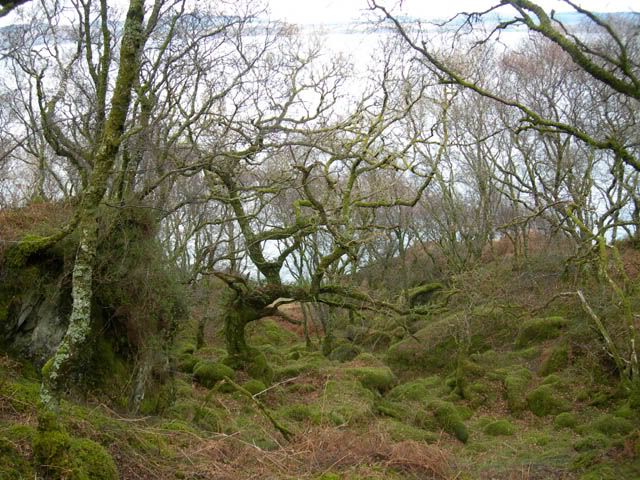
Shows how tough birch bark is. The wood has rotted away long ago yet this half metre high length of bark is still coping with the wind.
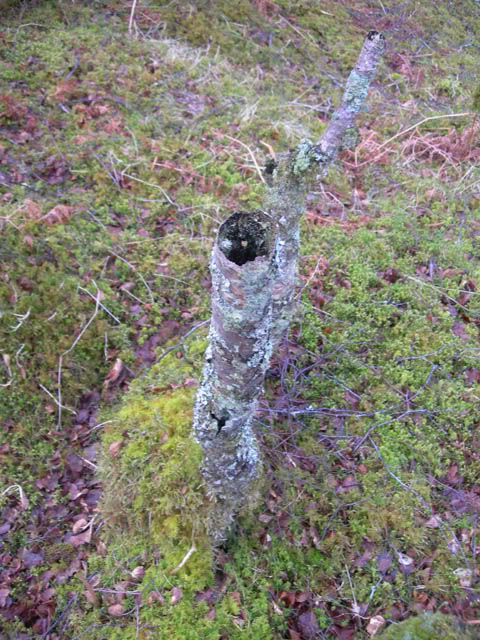
Ferns don't seem to mind where they grow. Come summer the whole mass melts together and you literaly can't see the wood from the trees(or anything else). The ground bracken hits 2-3m high in places and trees look like shrubs from a distance.
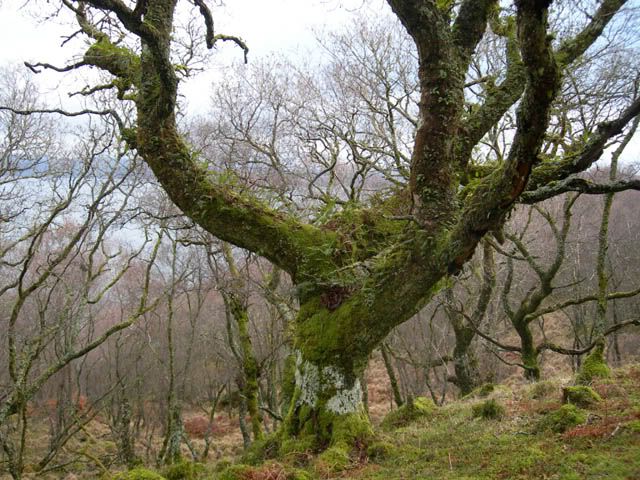
Lichens and mosses are everywhere. A SNH survey carried out years ago lists page after page of latin and the bulk of it falls into these catagorys. If anyone can recommend an good ID book it'd be much appreciated as we'd like to start matching names to faces.
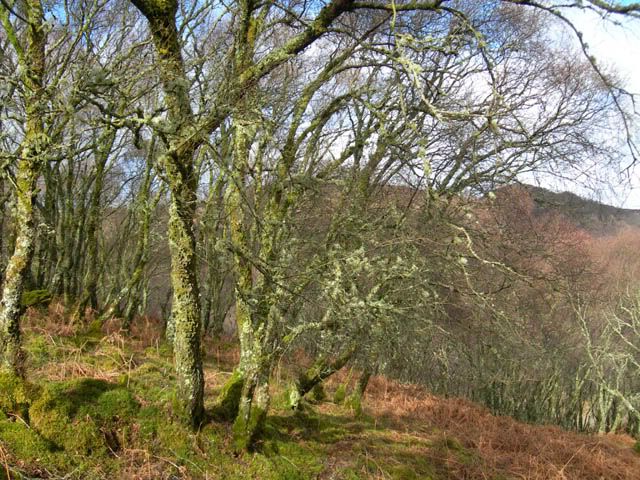
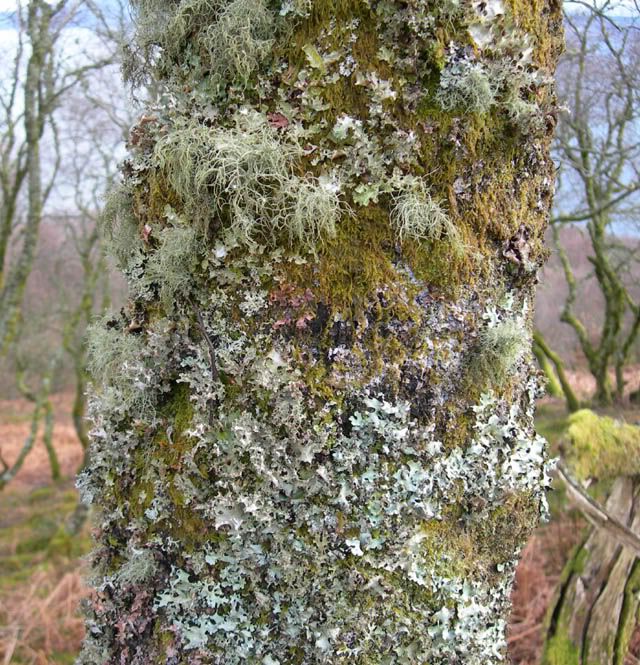

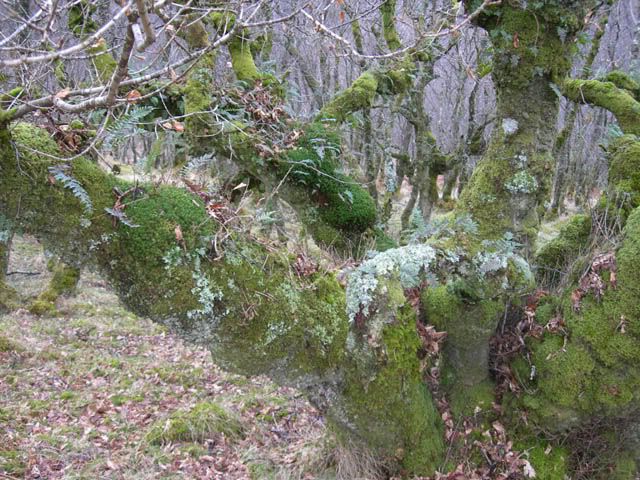
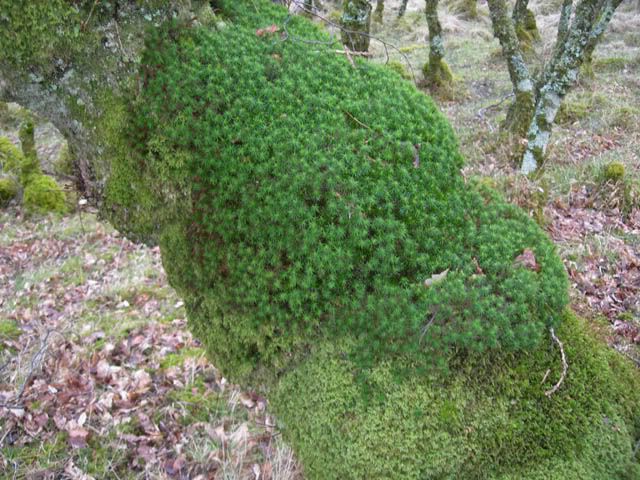
The burns are small but they've had a while to eat their was down. Crossing the gorges is always entertaining .
.
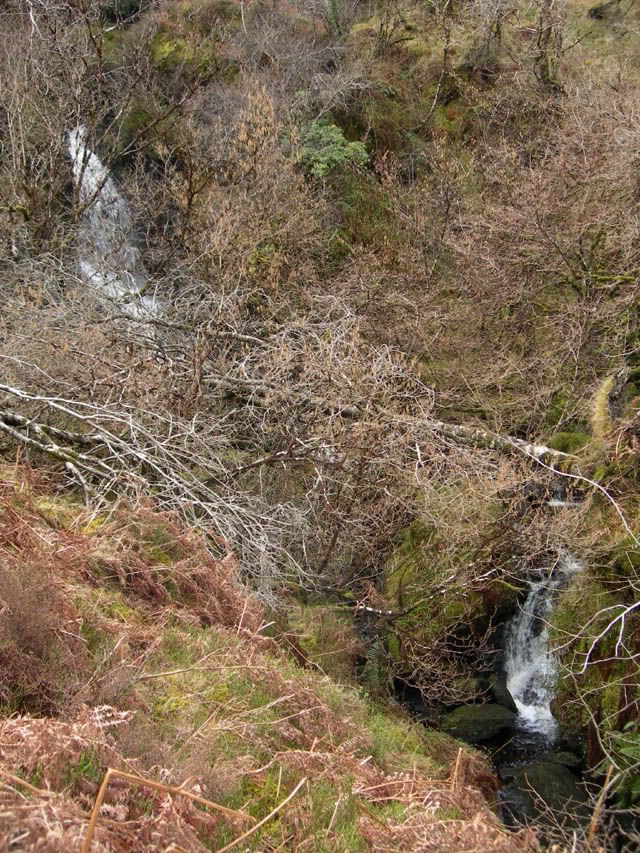
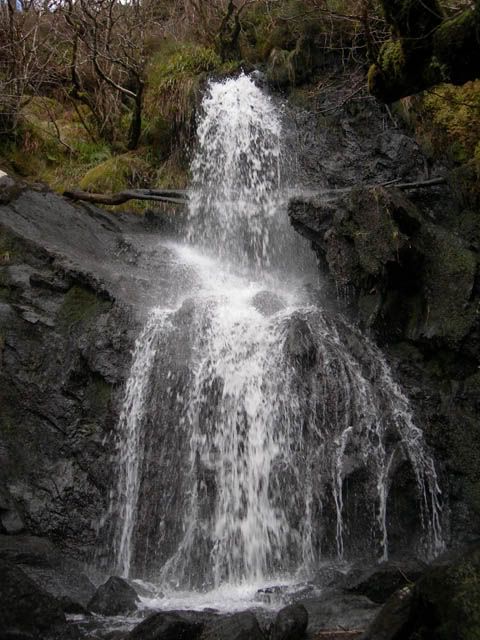
IDing from bark is a laugh when everything's covered in moss . At one point we stood among two hazels, three birch, an ash, an oak and a beech and up to 2.5m high they all looked exactly the same.
. At one point we stood among two hazels, three birch, an ash, an oak and a beech and up to 2.5m high they all looked exactly the same.
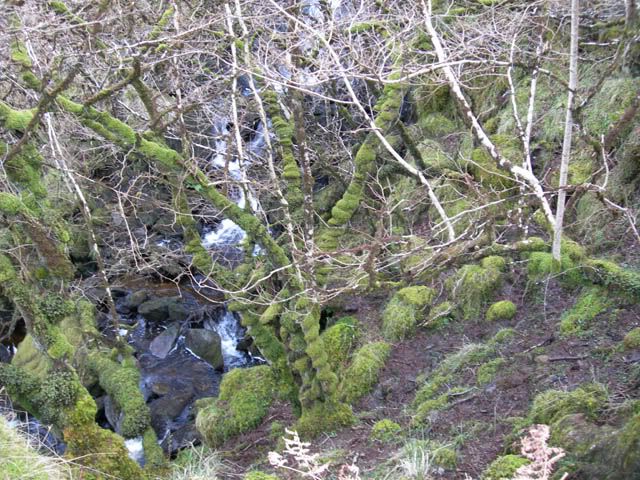

They look handy. There aren't many burls around funnily enough, only really in shelterd spots, curious.
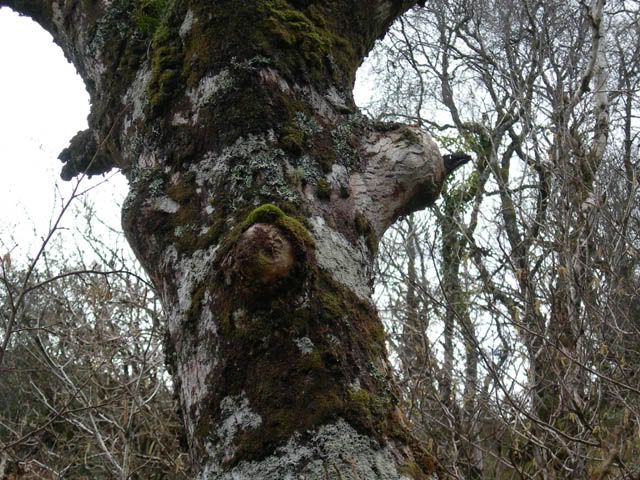
Long growing fungi like razorstrop and hoof were scattered around. Wish I'd had a camera in september when the ground fungi were in full swing, was a right old nibblefest.

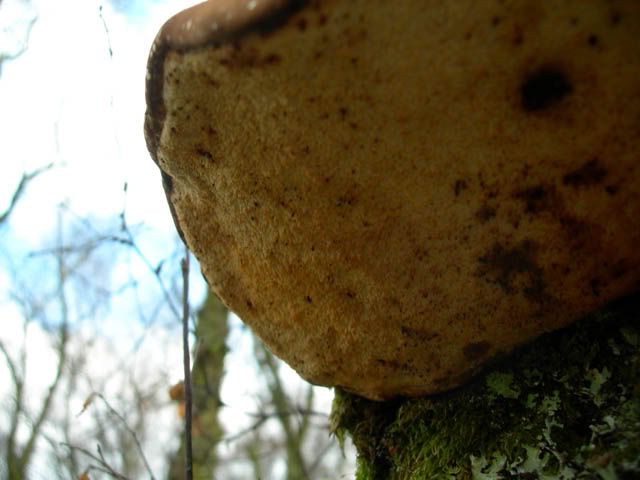
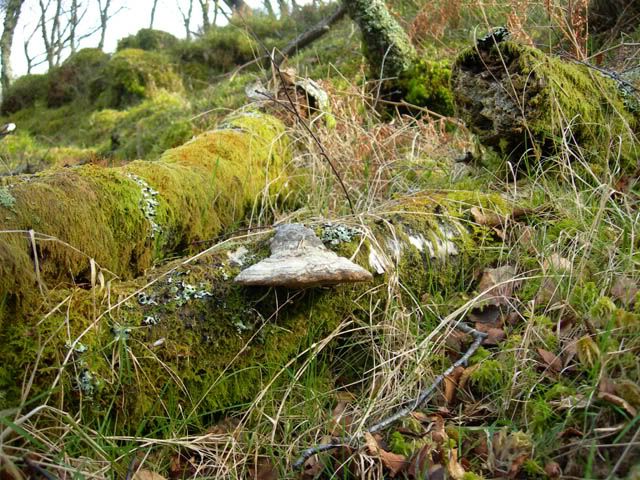
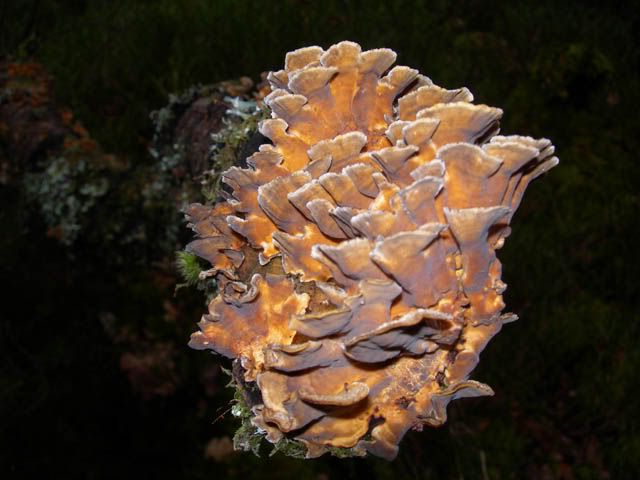
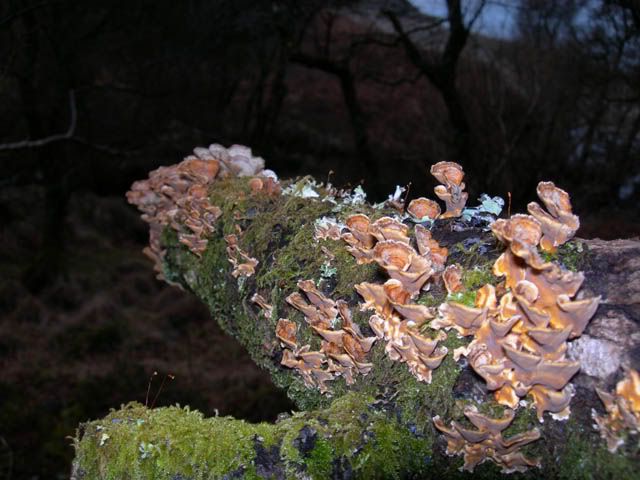
Primroses always seem to be out. They just go on and on. Don't know what these wee red chappies are but they're the next most common at this time.
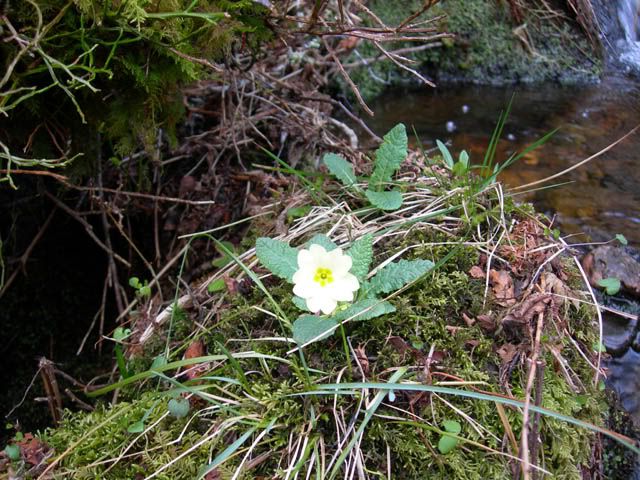
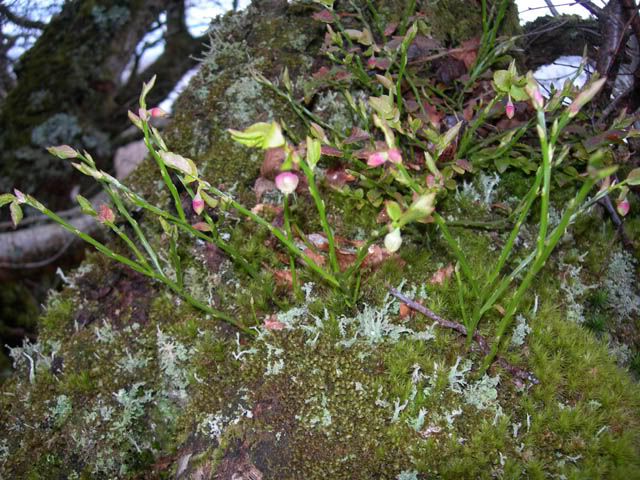
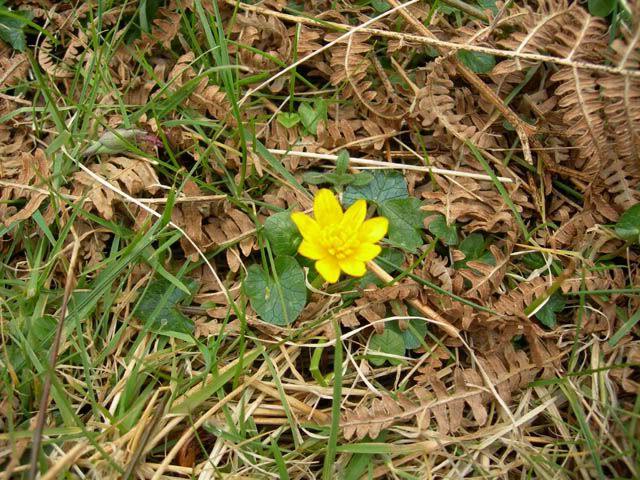
The shoreline's a pretty dodgy walk(i.e. fun) and is mangled upturned mica-schist with quartz veins. The only sign of man points a handy reference to another rhododendron(that's what we were out for, the blighters are easier to spot at this time).
rhododendron(that's what we were out for, the blighters are easier to spot at this time).
The frogspawn in the high freshwater rockpools looked fit to pop anytime.
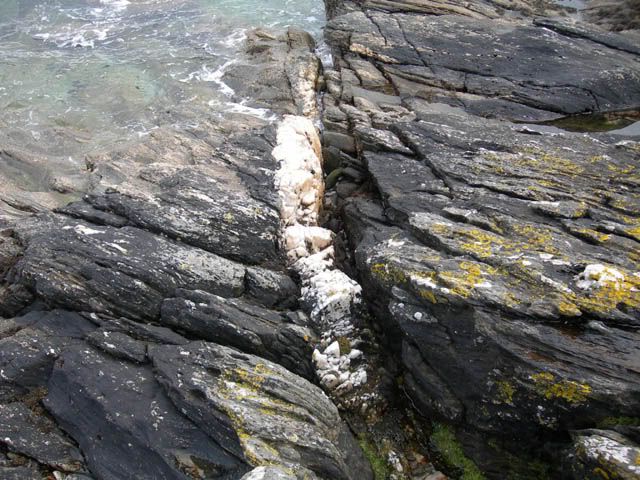

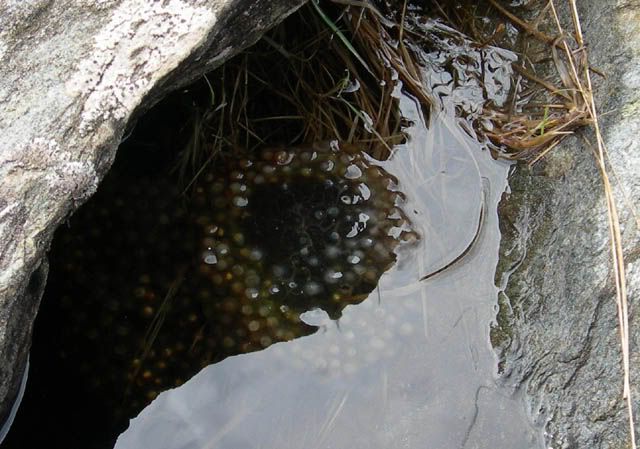


The wood's old and wind-blown, forming all kinds of wonderful shapes.

Shows how tough birch bark is. The wood has rotted away long ago yet this half metre high length of bark is still coping with the wind.

Ferns don't seem to mind where they grow. Come summer the whole mass melts together and you literaly can't see the wood from the trees(or anything else). The ground bracken hits 2-3m high in places and trees look like shrubs from a distance.

Lichens and mosses are everywhere. A SNH survey carried out years ago lists page after page of latin and the bulk of it falls into these catagorys. If anyone can recommend an good ID book it'd be much appreciated as we'd like to start matching names to faces.





The burns are small but they've had a while to eat their was down. Crossing the gorges is always entertaining


IDing from bark is a laugh when everything's covered in moss


They look handy. There aren't many burls around funnily enough, only really in shelterd spots, curious.

Long growing fungi like razorstrop and hoof were scattered around. Wish I'd had a camera in september when the ground fungi were in full swing, was a right old nibblefest.





Primroses always seem to be out. They just go on and on. Don't know what these wee red chappies are but they're the next most common at this time.



The shoreline's a pretty dodgy walk(i.e. fun) and is mangled upturned mica-schist with quartz veins. The only sign of man points a handy reference to another
 rhododendron(that's what we were out for, the blighters are easier to spot at this time).
rhododendron(that's what we were out for, the blighters are easier to spot at this time).The frogspawn in the high freshwater rockpools looked fit to pop anytime.





